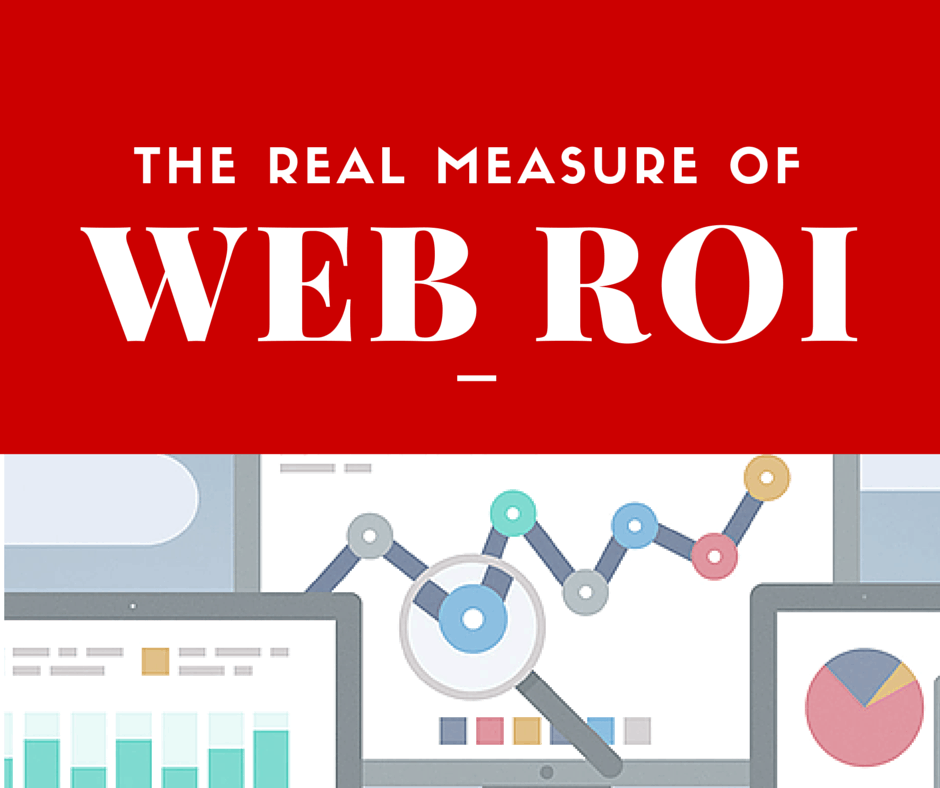
Looking over lots of data points can be overwhelming for many business owners, especially since you’re already wearing so many hats. To help you better assess your website’s ROI, we’ve boiled it down to five factors you should identify and understand.
Websites can be one of the most effective tools your business can have. While the cost of developing a new website can vary widely from free to thousands of dollars, web development is one of the best places to spend your money and the last place you want to try and save money.
Often your website provides the first impression of your business and can act as a 24-hour salesperson. Bad website + bad first impression = no sale.
That doesn’t mean, however, that you should waste money making the fanciest site on the World Wide Web. That’s where calculating the ROI (or return on investment) for your website is important.
Calculating Web ROI
Your web ROI can be calculated by determining your potential sales increase minus the cost of investment, to figure out your net gain. Next, take the net gain and divide by the cost of investment to reach your ROI. Depending on your type of business, calculating your ROI may vary slightly from this equation. E-commerce sites are easier and more straightforward in the calculation. Increased sales can be figured directly by products sold through your website and could generate millions from direct revenue.
Web ROI for non e-commerce websites is a bit trickier to calculate in that you need to identify your key performance indicators (KPIs) first. To do this, consider the ways your website contributes to your business (sales, leads, time saved, etc.), and then quantify that contribution. Maybe sales are made offline but were directly affected by someone visiting your site. For example, they filled out a form on a landing page to request a sales call or downloaded an e-book. Your website can help you qualify leads, bring in and identify prospective clients, and increase your sales closing rate. Each of these tasks helps grow your business and can be assigned a dollar value to better calculate your ROI. Anders Hoff for Smashing Magazine created a helpful Google spreadsheet calculating tool.
5 Factors for Measuring Web ROI
Looking over lots of data points can be overwhelming for many business owners, especially since you’re already wearing so many hats. To help you better assess your website’s ROI, we’ve boiled it down to five factors you should identify and understand:
1. Cost of building your new website
Time it takes to create, design costs, set-up costs and more.
2. Cost of Maintenance
Do you have to pay someone to make changes? On-going fees?
3. Timeframe before redesign
How long will your design last before you have to spend money on a redesign?
4. Conversion Rate
Percentage of site visitors who take action. Did your visitors purchase a product, fill out a form, request a call, download something, or sign-up for email notifications or a blog? Be sure to set a goal or call to action to measure how well you are meeting your site visitors’ needs and to measure web ROI. Design and content directly affect conversion rate. How easy is it for visitors to determine your call to action and engage? Bad content = high bounce rate.
5. Traffic to Your Website
Number of website visitors. Keep in mind that digital marketing generates traffic, so you should figure your marketing costs directly related to website promotions here.
HAVE QUESTIONS ABOUT YOUR NEXT PROJECT?




